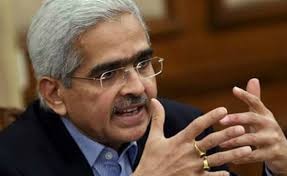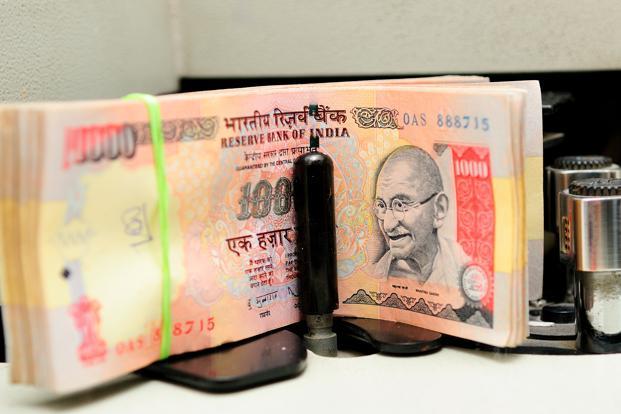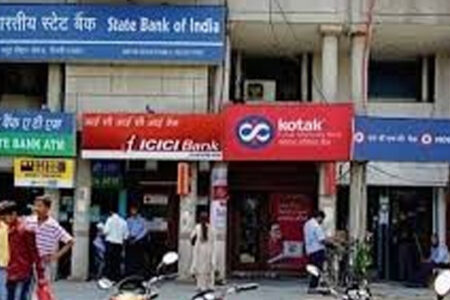At the end of the three-day meeting of the Indian central bank’s rate-setting body, the Monetary Policy Committee (MPC), Reserve Bank of India (RBI) Governor Shaktikanta Das once again announced his commitment to bottle the inflation genie first before any rate action. The monetary policy, his statement says, must continue to be actively disinflationary to align inflation to the target of 4 per cent on a durable basis.
The MPC also decided to remain focused on withdrawal of accommodation to ensure fuller transmission of the 250 basis points hike in the policy rate between May 2020 and February 2023, raising it from 4 per cent to 6.5 per cent to anchor inflation expectations.
While reading out his 39-minute statement on Thursday morning, Das had his first sip of water after half an hour.
The central theme of the monetary policy statement reminds one of American poet Robert frost’s “Stopping by Woods on a Snowy Evening” which ends, saying:
The woods are lovely, dark and deep,
But I have promises to keep,
And miles to go before I sleep,
And miles to go before I sleep.
Like the lone wagon driver in the poem, Das won’t sleep till he keeps his promise – bringing down inflation to 4 per cent. We are not out of the woods as yet as far as inflation goes.
Indeed, inflation has seen a significant moderation from the highs of the summer of 2022 after the monetary policy prioritised inflation over growth. However, the job is not yet finished and “we need to be vigilant about new supply shocks that may undo the progress made so far,” his statement says.
So, for the sixth successive MPC meeting, the repo rate remains unchanged at 6.5 per cent and, the stance, “withdrawal of accommodation”.
There is a new twist in the monetary policy tale. The RBI has delinked the stance from the liquidity scene in the system. The stance is not a reflection of the central bank’s approach to liquidity; it’s a corollary of the policy rate.
The statement says, the policy stance is in terms of interest rate which is the principal tool of monetary policy in the current framework. And, hence, the withdrawal of accommodation stance should be seen in the context of incomplete transmission and inflation ruling above the target of 4 per cent and the RBI’s efforts to bring it back to the target on a durable basis. As far as liquidity conditions are concerned, they are being driven by exogenous factors (read the government’s cash balance kept with the RBI).
As the government has started spending, there will be liquidity in the system. On its part, the RBI will remain “nimble and flexible” in its liquidity management. Das has also given assurance that the central bank will deploy all tools in its cupboard to modulate both frictional and durable liquidity to ensure orderly money market interest rates. This means the RBI will continue to infuse liquidity at the repo rate and suck out through variable reverse rate auctions to ease frictions.
Incidentally, adjusted for government cash balances, potential liquidity in the banking system is still in surplus. This rules out any prospect of a cut in banks’ cash reserve ratio (CRR) or the portion of deposits (currently 4 per cent) the commercial banks need to keep with the central bank for easing liquidity.
There is no change in the RBI’s inflation estimate for the current year. It’s 5.4 per cent. Assuming a normal monsoon next year, CPI inflation in FY25 will be 4.5 per cent — 5 per cent for the first quarter, 4 per cent for the second, 4.6 per cent for third and 4.7 per cent for the fourth.
When it comes to growth, the RBI seems pretty bullish. For FY25, its projection for real GDP growth is 7 per cent, marking the fourth successive year of 7 per cent (or more) growth. The current year’s projection is 7.3 per cent.
The finance ministry has pegged the nominal GDP growth estimate for FY25 at 10.5 per cent. The real GDP growth is estimated after adjusting for inflation – not the retail inflation alone; the so-called GDP deflator consists of certain portions of both retail and wholesale inflation which remained in deflationary mode for the seventh month in a row till October.
Analysts are divided on the tone of the RBI policy. Is it hawkish or dovish?
Das has carefully refrained from any forward guidance. I would call it a “sitting pretty” policy. There was no pressure on the RBI to do anything as on most macroeconomic parameters India is in a good shape. The debt to GDP ratio is better than most economies; the current account deficit declined to 1 per cent of GDP in the second quarter of FY24 from 3.8 per cent year ago; the local currency is stable compared with emerging markets and even some of the advances economies; foreign portfolio investment in the year so far has been to the tune of $32.4 billion against an outflow of $6.7 billion; besides a downwards trend in inflation and rock solid growth.
When do we see the next rate cut? The RBI won’t be in a hurry for that particularly when it is convinced about the growth prospects.
In the post policy press conference, Das spoke about “markets front running central banks” in terms of rate cuts in many parts of the world. We need to wait for the first rate cut by the US Federal Reserve in the current cycle. If there is no nasty surprise in geopolitics and the monsoon, we could see Das doing that in the second half of the year.
This column first appeared in Business Standard
The writer, a Consulting Editor of Business Standard, is Senior Adviser to Jana Small Finance Bank
Latest book Roller Coaster: An Affair with Banking
Twitter: TamalBandyo
Website: https://bankerstrust.in



